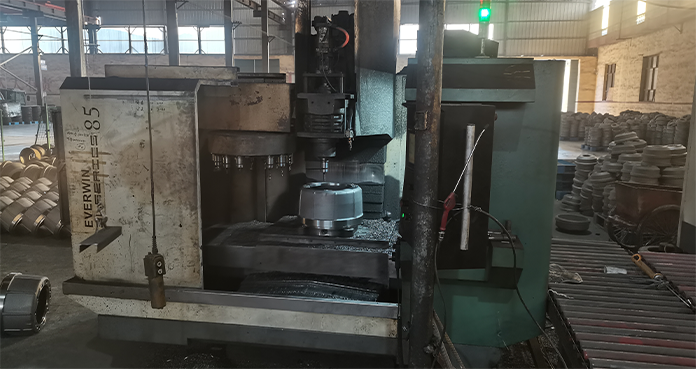Lis . 28, 2024 03:35 Back to list
Exploring the Unique Materials Used in Brake Drum Manufacturing and Their Impact on Performance
The Material Composition of Brake Drums An In-Depth Analysis
Brake drums are vital components in a vehicle's braking system, crucial for ensuring safety and performance. Their functionality relies heavily on the materials used in manufacturing them. This article explores the various materials utilized in brake drum construction, their properties, and the implications of material choices on performance and longevity.
Introduction to Brake Drums
Brake drums are cylindrical components that play a key role in drum brake systems. When the brake pedal is pressed, brake shoes inside the drum expand against its inner surface, generating friction that slows down the vehicle. Given the immense forces at play and the high temperatures generated during operation, the choice of material is paramount to ensure efficiency and durability.
Common Materials Used in Brake Drum Manufacturing
1. Cast Iron
Historically, cast iron has been the standard material for brake drums due to its favorable properties. Cast iron exhibits excellent wear resistance, high strength, and effective heat dissipation capabilities, making it ideal for absorbing the thermal energy produced during braking. Furthermore, it is relatively easy to manufacture and can be cast into complex shapes. However, it does have some drawbacks, such as susceptibility to corrosion and a tendency to be heavier than other materials.
In recent years, aluminum alloys have gained popularity in the production of brake drums, particularly for performance and lightweight vehicles. Aluminum is significantly lighter than cast iron, which can contribute to better fuel efficiency and improved vehicle handling. Modern aluminum alloys can also offer good strength-to-weight ratios and resistance to corrosion. However, one drawback is that aluminum can be less effective at dissipating heat compared to cast iron, which must be carefully managed in high-performance applications.
3. Composite Materials
material of brake drum

Advances in material science have led to the development of composite brake drums, which combine various materials to exploit their strengths. These materials can include reinforced polymers, carbon fibers, or even specialized metal composites. Composite materials offer the possibility of reduced weight without sacrificing performance, and they often exhibit superior thermal resistance. This innovation opens new avenues for the development of high-performance braking systems.
4. Carbon-Carbon Composites
For high-performance and racing applications, carbon-carbon composites are favored. These materials consist of a carbon matrix reinforced with carbon fibers, providing exceptional strength, lightweight properties, and resistance to thermal degradation. They are designed to perform optimally under extreme conditions, making them ideal for motorsport vehicles. However, their high cost and specialized manufacturing processes limit their widespread application in everyday vehicles.
Considerations for Material Selection
When choosing materials for brake drum manufacturing, several factors need to be considered
- Thermal Conductivity The ability of the material to dissipate heat is essential. Excess heat can lead to brake fade, which significantly diminishes braking performance. - Weight Lightweight materials can enhance vehicle efficiency and performance, particularly in sports and electric vehicles. - Durability The longevity of brake drums is crucial for reducing maintenance costs and ensuring safety. - Cost Material costs can significantly affect the overall manufacturing process, which is an essential consideration for production vehicles.
- Environmental Impact Increasingly, manufacturers are considering the environmental implications of their material choices, opting for sustainable and recyclable options where possible.
Conclusion
The evolution of brake drum materials reflects advances in technology and changing automotive requirements. While cast iron remains a reliable choice, the emergence of lighter and more efficient materials, such as aluminum and composites, is reshaping the landscape of automotive engineering. Understanding the material properties and their implications can lead to better-informed decisions during vehicle design and manufacturing, ultimately enhancing performance, safety, and sustainability. The future of brake drum technology will undoubtedly continue to evolve as the demand for efficient and high-performing vehicles grows.
-
Premium Brake Drum Iveco – Durable Drum Brake Drum & Brake Shoe Solutions
NewsJul.08,2025
-
High-Performance Brake Drum Liza for Enhanced Safety Reliable Drum Brake Drum & Brake Shoe Solutions
NewsJul.08,2025
-
High-Quality Brake Drum MAZ – Durable Drum Brake Drum & Brake Drum and Brake Shoe for Optimal Performance
NewsJul.07,2025
-
High-Quality Brake Drum Kamaz for Reliable Performance Durable Drum Brake Drum & Brake Shoes
NewsJul.07,2025
-
High-Quality Brake Drum Kamaz for Reliable Performance Durable Drum Brake Drum & Brake Shoe Replacement
NewsJul.07,2025
-
Brake Drum Man - High-Quality Drum Brake Drum & Brake Drum and Brake Shoe Solutions
NewsJul.06,2025
